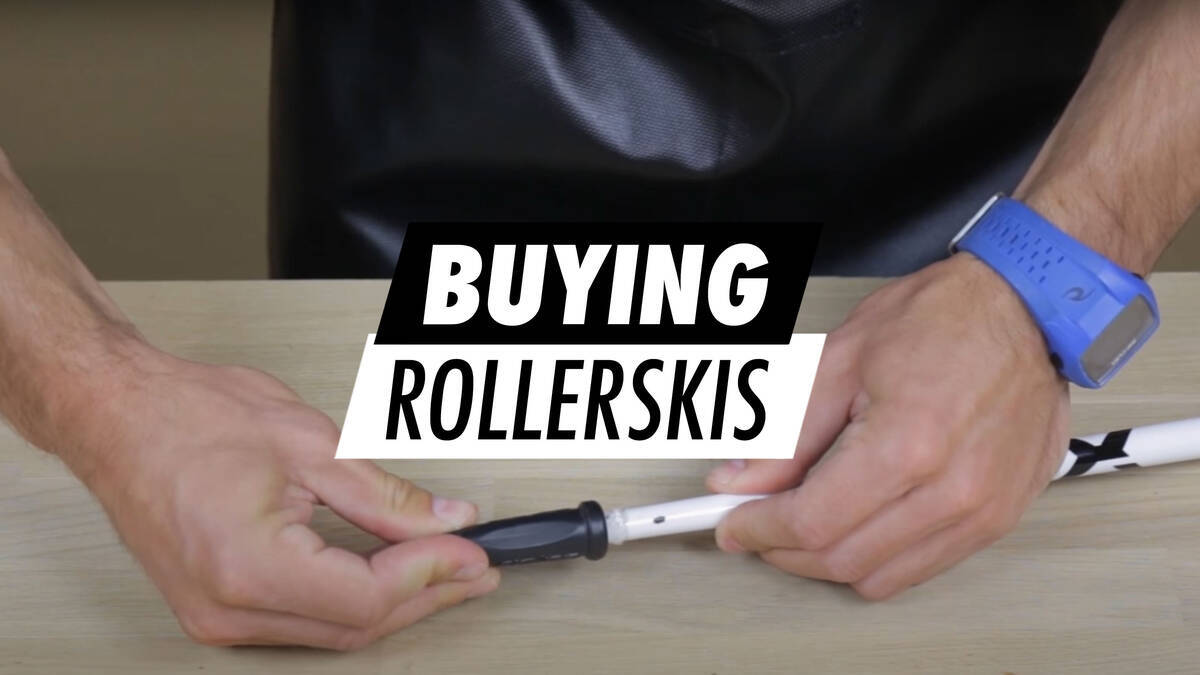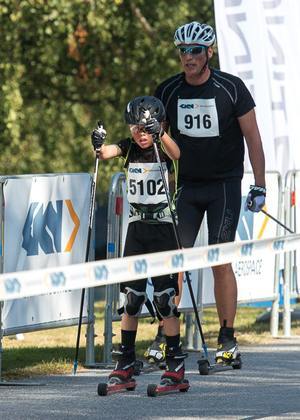Purchasing Roller Skis

Roller skis come in a variety of models and styles, providing you with numerous options to discover the perfect configuration. This guide will assist you in selecting new roller ski equipment.
Discover below how to identify the suitable equipment for you.
Frames: On what surface and in which style are you skiing?
Initially, it’s crucial to assess your skiing style - whether you favour traditional roller skiing or prefer the skating style - as well as the type of surface you prefer to ski on. The answers to these queries significantly influence your choice of roller ski frame. For example, if you intend to ski on gravel, picking low frames isn’t the best choice. Conversely, higher frames will challenge your balance. Broadly speaking, enrolling in a rehearsal session is highly advisable if roller skiing is new to you. This will also assist in determining the right equipment.

Frames are crafted from various materials, such as aluminium, wood, steel, and carbon, each offering distinct advantages and disadvantages. Wood, for instance, allows for greater flexibility and enhances the skiing sensation, whereas aluminium is lighter and more rigid, making it ideal for competitions due to its optimised power transfer.
Wheels for Roller Skis
In addition to selecting appropriate frames, picking wheels with the right hardness is equally vital when choosing your roller skis. Certain roller ski brands provide one to four distinct wheel-hardness options. If riding on gravel roads is your plan, softer wheels are advisable, but if mainly skiing on asphalt, harder wheels are a suitable choice. Consider the hardness and material of the wheels when purchasing roller skis. The harder the wheels, the more resistance you’ll encounter on smooth asphalt, whereas softer wheels facilitate a smoother roll.
Roller Ski Boots
The variety of roller ski boots has expanded greatly in recent times. While using regular winter gear was once common, summer roller ski boots are now available. These boots are advantageous as they are less insulated than winter boots, providing greater comfort when temperatures exceed 5-8 degrees Celsius.
Roller Ski Poles and Pole Tips
The roller ski sector has evolved to include poles specifically designed for roller skiing, particularly advancing in terms of weight and materials.
Equip yourself with roller ski poles tailored to your skill level, ski type, and height. Beginners and those at an intermediate level may prefer softer poles for greater comfort and reduced arm strain. Experienced racers might opt for stiffer poles (80 - 100% carbon) for superior power transfer, though these are prone to breaking due to bumps and impacts. Thus, carrying them in a pole bag during transit is prudent. Always avoid discarding them on the ground or into vehicles.
Your roller ski pole length should align with your height, chosen with your preferred skiing style in mind (classic or skate).
Classic
Select poles approximately 30 cm (12 in) shorter than your height. Measure the correct length by standing with the pole upright on the ground. Bear in mind that seasoned skiers may have personal preferences for pole length.
Skate
For the skating style, poles should be 15 - 20 cm (6-8 in) shorter than your height. Measure them with the pole standing on the ground. More experienced skaters might have their preferred pole length.
Tips for Roller Ski Poles
A common misconception is the usage of standard winter pole tips for roller skiing. It’s crucial not to compromise here! Aim for top-quality tips, as cheaper options tend to be softer and wear quickly. Initially, a grindstone might suffice, but over time, replacement will be necessary.
View this video for guidance on changing roller ski pole tips:
Grips and Straps
Roller ski poles come with a selection of grip and strap models. Efficient control of the pole is essential, facilitated by grips with a cork surface for comfort. Straps are available in various designs, like Velcro or the innovative boa closure.
In time, grips may wear down and need replacement.
Watch the video below to learn how to change grips:
Additionally, for safety’s sake, if your poles lack built-in reflectors, consider adding reflectors for visibility in traffic. The poles are the most dynamic components during skiing, thus effective in attracting attention from motor vehicles on dimly lit cycle paths or roads. Numerous roller ski poles come with integrated reflectors - further details can be found under each product listing.
It goes without saying, wearing a helmet while roller skiing is crucial, as speeds can reach approximately 30 km/h.
We trust this guide has pointed you in the right direction and addressed your inquiries about purchasing roller skis and accessories. Should you have remaining questions or be unsure of which roller skis to select, please don’t hesitate to contact us.
